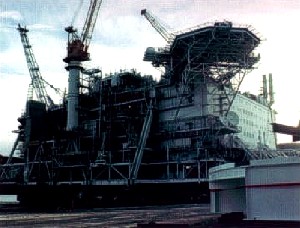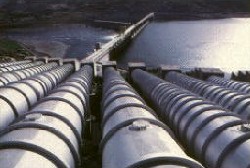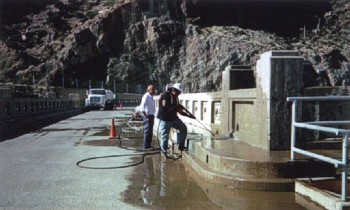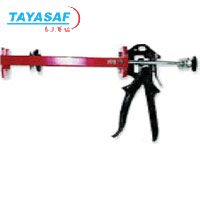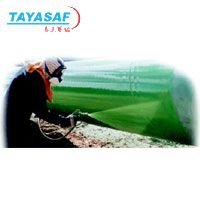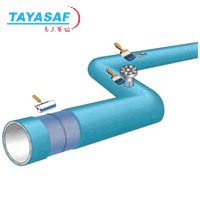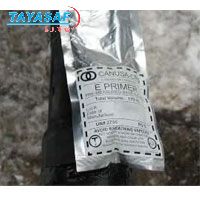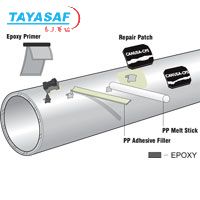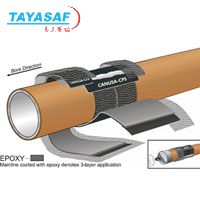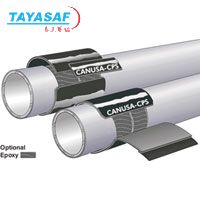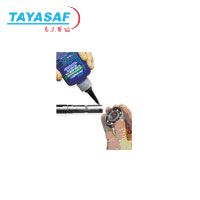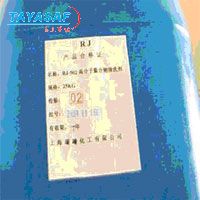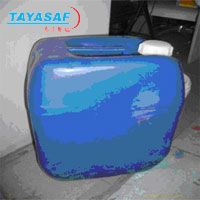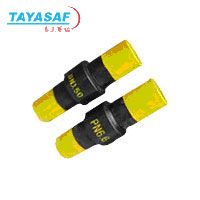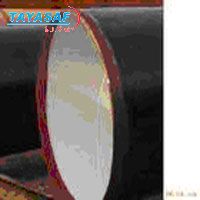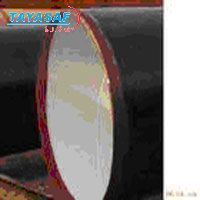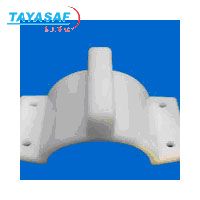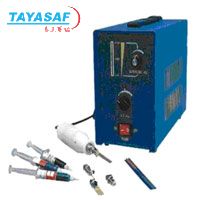The Cost of Hidden Salt Contamination
The protective coating industry and corrosion engineers are more aware than ever before of the damage that can be caused by salt contamination.
Soluble salts, like chlorides and sulfates, are found on surfaces everywhere. These salts pull moisture from the air, causing protective coatings to fail. They can also be the cause at degradation of the substrate. Left unchecked, the surface contamination can corrode into deep pockets, making decontamination even more important and challenging. Lost productivity from protective coating failures are costly, and the failures can he hazardous.
Salt Contamination Removal by CHLOR*RID
CHLOR*RID is a unique, patented, organic bonding chemistry which aids in the removal of chlorides, sulfates and surface reacted salts. It removes these in a simple dilution with any potable water source.
CHLOR-RID is the easiest and most economical way to remove soluble salt contaminants with any method -- high-pressure washing, wet abrasive blasting, or hand-cleaning. CHOR*RID is biodegradable, non-flammable, and contains no volatile organic compounds.
Using CHLOR*RID during coating procedures reduces costly coating failures and corrosion rates -- simply, safely and economically. Laboratory and field tests confirm that it is effective on most industrial surfaces, including steel, foam, concrete and plastics. It has been used by private industry, for federal and state highway coating and cleaning projects, to wash dams, tanks, bridges and machinery, even in a microbiological lab.
Alternative methods are not as cost effective. Abrasive blasting often requires repeated blasting. Some abrasives contain salts and actually deposit trace amounts of soluble salts on surfaces. Other methods require heat or use of hazardous chemicals. Some methods may leave residues that interfere with the adhesion of the protective coating, thus contributing to coating failure.
If salts are soluble, why doesn't water remove them? Because they are electrochemically driven to the substrate and are attached with greater strength than the forces applied to remove them.
|
Recommended Uses
Pipes & Pipelines
Bridge Structures
Ships
Aircraft
Mining Facilities
Storage Tanks
Public Utilities
Electronics
Offshore Drilling Rigs
Marine Structures
Process Equipment
Pulp and Paper Mills
Power Generation Plants
Natural Gas Facilities
Saw Mills
Petrochemical Installations
Cooling Towers
And More...
Specifications |
CHLOR*RID Features
Water soluble
Biodegradable
Non-flammable
No volatile organic compounds
Economical
Does not affect coating adhesion
Environment and worker friendly
No health concerns
No certification required for use
|
|
Color |
Blue-green |
|
Typical Coverage |
300 - 1000 square feet per US Gallon |
|
VOCs |
None |
|
pH |
3.3 ± 0.2 |
|
Packaging |
1 / 5 / 55 US Gallons or 4 / 20 / 220 Liters |
|
Number of Components |
Single Component |
|
Shelf Life |
24 months |
|
Application Temperature |
33°F - 250°F |
|
Low Temperature Use |
Keep from freezing. It frozen, thaw before use. |
Test Results & Testimonials
The Permite Corporation tested CHLOR*RID with several of their coating systems, including Grip-Tite Epoxy Primer, Permox Epoxy, Permox Type II Epoxy, and PCS-865 Epoxy- Novalac. They performed six different test: salt spray on scribed panels. ASTM B 117: weatherometer, ASTM G 5377, and adhesion tests ASTM D 2704, ASTM D 3359, ASTM D 522, and ASTM D 4541.
“We have concluded that the use of CHLOR*RID demonstrated no adverse effect to either adhesion or performance witch these respective products."
"We would recommend the use of CHLOR*RID with these products when soluble salts contamination is encountered during the surface preparation phase of high performance coatings application."
The Permite Corporation
"Wasser would support and recommend use of the CHLOR*RID solution, including its use within a specified system in geographical zones prone to salt and chloride contamination for both atmospheric and immersion service."
Wasser High Tech Coatings
Tnemec Company conducted long-term tests using CHLOR*RID in conjunction with two high-performance coating systems in their laboratory. The coating systems tested are:
A polyamine epoxy primer top-coated with acrylic polyurethane
A moisture-cured urethane zinc-rich primer, also top-coated with an acrylic polyurethane
"Our testing has shown that the use of CHOLR*RID has no effect on ASTM D 3359 adhesion to SSPC SP 10 prepared steel after ten freeze-thaw cycles."
Tenemec Company Incorated
After a one year testing program in an Atlas Cell, Wisconsin Protective Coating Corp. astated:
"The following coating system was applied to our recommended film thickness for immersion service on Atlas Cell Plates that were contaminated with a brine solution for one week and them decontaminated by hand scrubbing with a CHLOR*RID solution.
7159 Control (1) Uncontaminated Steel
7159 with Decontaminated Steel (2)
The test showed CHLOR*RID Solution was effective in reducing chloride contaminates and did not effect adhesion of the coating."
Wisconsin Protective Coating Corp.
"When used according to specifications, CHLOR*RID des not affect the adhesion of any of the Siloxirane products regardless of whether immersion service, spill and splash or vapor. Advanced Polymer Sciences also affirms the recommendation of the use of CHLOR*RID as an accepted method of surface decontamination."
Advanced Polymer Sciences
Directions
High Pressure Washing
CHLOR*RID is added to the water of the pressure washer, usually in a dilution ratio of 1:100. The dilution ratio is dependent on the contamination level and the water quality. Add CHLOR*RID by means of a metering pump, or add to a reservoir supply. A siphon device may he used, but most such devices lack dilution control and positive input. Use potable water or other approved source. A minimum 3000 PSI pressure washer and a zero degree rotating nozzle are recommended. Flush washer and lines prior to application. Hold pressure nozzle perpendicular to the surface and no more than 12 inches away to ensure all surfaces are washed with direct high pressure. In areas of deep pitting, slow the wash speed to enable CHLOR*RID to penetrate. Do not rinse. Typical application rate is 300 to 1000 square feet per gallon of CHLOR*RID.
Hand Washing
Use
CHLOR*RID DTS™ "Direct To Surface" according to directions. CHLOR*RID DTS is ready to use direct from the container - no dilution necessary.
Wet Abrasive Blasting
Add CHLOR*RID to the system at 1 US Gallon per 300 - 1000 square feet of surface to be blasted using potable water or other approved source. Dilution ratio of 1:500 typical. Add CHLOR*RID to rinse water at 1:500 ratio. Always use appropriate safety equipment.
Testing
When field testing for chlorides, always use an on specific testing device such as CHLOR*TEST for surfaces,
CHLOR*TEST “A" for abrasives and
CHLOR*TEST "W” for water and other liquids. Conductivity measurement will give no indication of chloride levels.

 泰亚赛福 —— 世界领先的检测仪器集成供应商
泰亚赛福 —— 世界领先的检测仪器集成供应商 


 您当前的位置:
您当前的位置: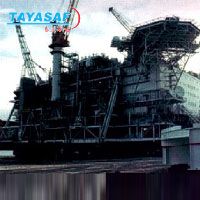

 加入对比
加入对比


